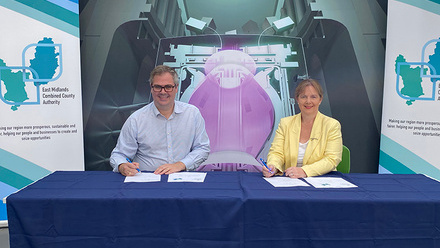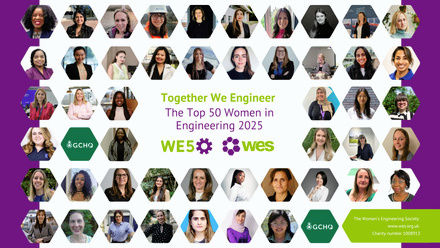Returning to the STEM of the issue
Natalie Desty, who set up STEM Returners in Hampshire, UK, answers questions about the challenges for this increasingly significant group who want to return to a career in STEM.
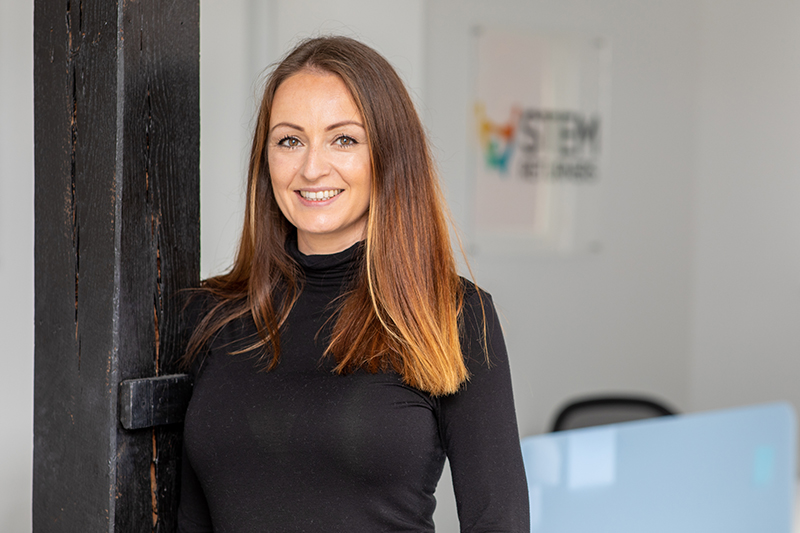
The STEM Returners Index released last year revealed that age, gender and a perceived lack of recent experience are preventing STEM professionals from returning to industry after a career break.
The Index, conducted by STEM Returners in Hampshire, UK, asked more than 1,000 STEM professionals on a career break a range of questions to understand their experiences of trying to re-enter the STEM sector.
Nearly a third (29%) of returning women said they have personally experienced bias in recruitment processes due to their gender compared to 7% of men. Despite 39% of females wanting to return to work due to children now being of school age (vs 8% of males), 40% of females still feel childcare responsibilities are a barrier to returning due to lack of flexibility offered by employers.
In the survey, men (46%) were more likely to be victim of bias because of their age compared to women (38%). Bias also appears to become more prevalent with age, with more than half of over 55’s saying they have experienced personal bias, compared to as low as 23% in younger age groups, according to the survey.
Of Black and Minority Ethnic (BME) respondents, 67% said they find it difficult or very difficult to return to work, compared to 57% of white British respondents.
The Index also asked returners about the impact of COVID-19 on their experience. More than 34% said the pandemic made getting back to work more difficult than it would have been already. It would also appear that for many people, COVID-19 was the catalyst for a career break that they might not have taken otherwise. Redundancy was also on the rise year-on-year as a reason for career breaks (20% in 2022 vs 17% in 2021) according to the results.
STEM Returners seeks to provide professionals with a supported route back into the career 'they worked hard to build'. It includes advice, career coaching, networking opportunities and mentoring to ensure they are ready and confident to return. They do this through partnering with STEM organisations to run paid, short-term, returner programmes, “enabling professionals to return to an equitable and inclusive STEM sector”.
The programme is based around a 12-week placement for candidates seeking to return. There is always the opportunity of a permanent position at the end of the placement and 96% of returners have been retained by the host organisation after their programme. There are currently 39 programmes running and 60 are projected by the end of 2023.
Natalie Desty, Founder and Director of STEM Returners, tells us more.
Why was STEM Returners set up?
I spent 13 years in recruitment until I reached Director level for a large recruitment firm, and I had long been aware of the insurmountable barriers that returners face and the incredibly slow progress in diversity and inclusion within engineering in particular.
I attended a conference by the Women’s Engineering Society in 2015 and two particular statistics really stood out to me – that 20,000 females had left engineering and that 40% of 40-year-old women fall off professional registration. I personally knew of the barriers that returners had when being compared with non-career break candidates and also how fixing this issue would positively impact diversity and inclusion. So I left my Director level role and decided to take a risk and build a company that made a difference to something I was passionate about.
Highly skilled STEM professionals get overlooked when attempting to return from a career break. The skills gap is growing, and the UK needs a diverse, agile and innovative STEM workforce more than ever. The current UK engineering workforce is 86% male and 91% white, yet few engineering companies are taking meaningful steps to attract minority ethnic groups or address the gender imbalance in their organisation.
What are STEM Returners most significant achievements to date?
Definitely, the lives that we have changed. We have now returned over 330 returners to STEM – qualified and experienced people that were otherwise locked out of standard recruitment processes. With these returners, we are also changing the diversity of engineering – our returners have been 46% female (compared to an engineering average of 10%) and 34% from ethnic minority backgrounds (compared to 7% in engineering). Ninety-six per cent of all returners placed on the programme have been retained by the host company.
There are so many life-changing stories, but one that stands out to me is a lady that we placed 18 months ago. She was living in a women’s refuge at the time having escaped domestic abuse resulting in a five-year career break despite many unsuccessful applications – she had all but given up. We placed her on a programme and fast forward to today, not only was she given a permanent role after her placement, she has since been promoted and just bought her first flat.
What are the main challenges facing STEM Returners?
Thousands of STEM professionals across the UK who have had a career break find it incredibly difficult to get a job and are the victims of outdated recruitment methods that prevent them from getting an interview, let alone being offered the role.
Unconscious bias at the shortlisting stage, hiring pressures leading to assumptions made on limited information, and the common misconception that a ‘CV gap’ equates to a deterioration of skills are all reasons for not being given a chance. These hidden barriers mean talented professionals are being left behind, which is damaging the UK economy.
Many people on a career break keep themselves up to date with their industry, are able to refresh their skills easily when back in work and have developed new transferable skills that actually benefit their employers.
Every year, we publish The STEM Returners Index to further understand these barriers, to track the progress industries are making with solving these issues and campaign for change.
The Index is open to all STEM professionals who have had a gap in their career, who are attempting to return to work, or who have recently returned to work. The survey is anonymous and will ask a variety of questions including reasons for a career break and what challenges were faced when attempting to return to work. The last two surveys have told us the biggest challenge returners face is still a lack of feedback from employers once they’ve applied for a role, with 50% of applicants receiving feedback never or hardly at all.
Sadly, 35% of returners say their personal confidence has been affected by the recruitment challenges they face, and their low confidence has now become a barrier of its own.
We need to get hiring managers to look at returners in a different way, not to compare them to job specs but to see the person behind the CV and the transferrable skills and experience that they have to offer. We have to remind people that this is about saying yes to people that you might normally say no to through those outdated recruitment channels.
Sadly, gender and ethnicity are perceived as a big barrier to returning. Our research shows the barriers faced by returners disproportionately affect female engineers who are still responsible for most childcare and caring responsibilities. Only 14% of UK STEM professionals are on a career break out of personal choice, with the largest reason for the break being childcare responsibilities. Women are also five times more likely to take a career break for childcare reasons than their male colleagues.
There is also a disproportionate impact on engineers from ethnic minorities, particularly refugees, and there are additional barriers at entry level to graduates from ethnic minority backgrounds.
Men were finding it more difficult to return in 2022 than they did in 2021, with 70% of males in 2022 saying they are finding it difficult or very difficult to return, compared with 64% in 2021. Men are also more than twice as likely to have been forced to take a career break due to redundancy (29% vs 12% for women).
Over 55’s are most likely to apply for over 70 applications (35%) and get no feedback at all (56%), which makes it no surprise that they are finding it more difficult to return to work than any other age group.
COVID-19 also seems to have had a stronger impact on older professionals’ decision to take a career break in the first place, with 54% of over 65’s citing COVID-19 as a major factor in taking a break compared to an average of 36% across other age groups. We seem to have reached a point where age has a larger impact on someone’s ability to return to work than any other factor. In fact, female STEM professionals who have experienced personal bias are more likely to cite age (38%) than gender (29%) as the nature of the bias they’ve seen.
What are the benefits of taking on a STEM returner?
The programme aims to increase the representation of underrepresented groups in STEM and ensuring that those who have left STEM are able to return to a flexible, supported and inclusive environment.
The STEM Returners programme seeks to achieve the following:
- Increase the number of mid-senior career engineers
- Increase the number of female engineers
- Attract and re-train engineers from other industries
- Engage the majority in understanding the benefits of diversity and inclusion
- Raise awareness of the impact of unconscious bias and how to mitigate its effects
- Promote good practice in inclusive recruitment
We work with everyone who is struggling through standard recruitment channels and for whatever reason not being successful. This could be a 2019 graduate with a neurodiverse brain set who doesn’t perform well in assessment centres, parents who have taken a break to care for young children, a skilled and experienced refugee looking to restart their career in the UK, or it could be a candidate looking to return from redundancy after a 30-year career.
Structured returner programmes remain the exception and not the norm. Without doubt, positive progress is being made, however, there is clearly still a huge opportunity for STEM organisations to benefit further from engaging with the returners community… UK STEM industries need more companies, industry leaders and hiring managers to take note and think more broadly about how they access this hidden talent pool, giving talented professionals a fair chance.
In the short term, we hope to see more organisations commit to hosting a STEM Returners programme, while in the long term, we hope that the programme can be a catalyst for progressive change in recruitment.
With continuing growth and success for STEM Returners, we believe we can lead the movement for change, not only showing the strong business case for it, but the moral obligation we all have to make STEM representative of society.
Kat Bruce, a STEM returner at BAE Systems
Can you tell us a bit about your job and what you do?
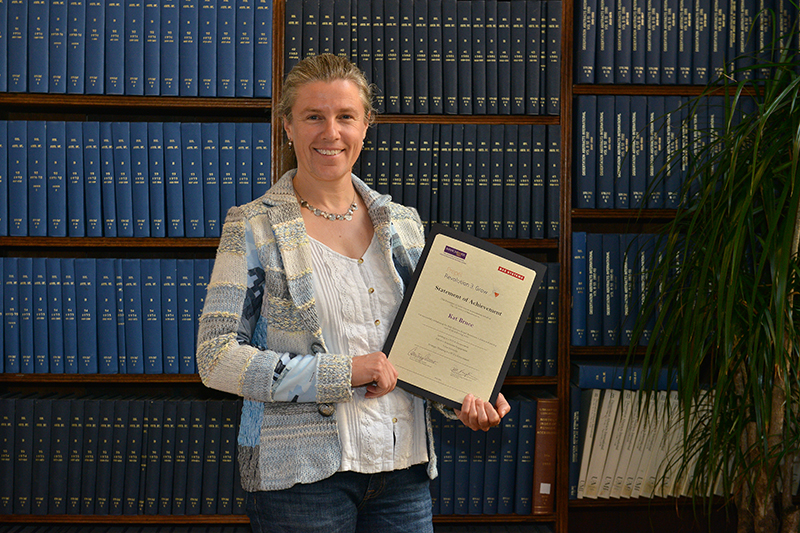
I am currently Technical Integration Lead on a digital transformation programme but came into BAE on marine systems engineering knowledge from the superyacht world and project engineering from the automotive industry.
From arriving on the STEM Returners programme in 2018, I spent nearly three years working in a department supporting Navy ships maintenance before moving to a role with a team who wanted to capture ship sensor data and conduct data science driven analytics on it. My role now looks at how we can do more of this kind of thing across a wider part of our product lifecycle and use our data better to enhance and support our engineering activities.
No two days are ever the same and it is hugely satisfying to know that my efforts help to make sure that Navy ships are safe (for people and the environment). I have really enjoyed how I have been able to use my past experiences and also be given amazing learning opportunities at BAE to do work I never dreamt I could do. I also love working with such a diverse team of dedicated and highly knowledgeable people.
Can you share why you were returning to work and the reason for the gap?
I didn’t technically ever stop being an engineer so…it wasn’t really a gap. I started the STEM Returners process though because a lot of HR functions viewed it as such due to my being based overseas as a Chief Engineer on superyachts. I did give up my UK Engineering Chartership as it was not recognised in the superyacht industry but have since regained it with BAE.
What challenges did you find there were in coming back to work after time away?
No-one recognised my yacht engineering experience as valid engineering, despite having worked in areas such as ship systems design and maintenance, hydraulics and electronics systems. I also don’t think that it helped that my previous employer was not a recognised UK company and that I did not know (no one said in their advert) that there was an expectation to apply to jobs relating your skills to the Engineering Council skills framework.
Do you think there are any specific recruitment hurdles in your sector or line of work?
I think sometimes people advertise describing the person who has just left and not really with an open mind with regards to different experiences and skills. They often are not looking to train someone into the role. There is always an element of learning coming into a job anyway with a new team, processes, culture and products, but enthusiasm and adjacent knowledge could be enough to get someone in who will thrive.
How did BAE Systems and the STEM Returners programme help with going back to work?
STEM Returners uses a different approach to the hiring process by interviewing a pool of people directly with the engineering managers. We could then both see whether I was a fit for BAE through a conversation rather than just my CV. The ramp-up process that STEM Returners asks both parties to sign up to, not only allows the employee to be bolder with either a change of work or return to work, but also enables an employer to take on someone they may not have considered before. It was also good that this was very much ‘sold’ as a trial and, if it didn’t work out, that was ok as there were other roles on offer to me and other candidates available to BAE. There was less pressure on both sides.
Once I was in the role, my line manager made sure I was buddied up with someone to ask day-to-day questions, introduced me to the wider team and encouraged me to speak to them for advice and knowledge.
What advice would you give to other people looking to return to work?
The STEM industry is short of people and the more flexible and effective we can be to match people and roles the better for both individuals and businesses. I think it can also be too easy to think you don’t meet all the criteria so you won’t be accepted even if the role sounds like a good opportunity for you – just try – there may be other things on your CV that are desirable, but the advert didn’t ask for. At worst you will be no worse off than if you don’t apply – you can do more than you think.
Debbie Kempton, Group Engineering Director at BAE Systems

Why did BAE Systems use the STEM Returners programme?
For a couple of reasons – to tap an additional pool of qualified engineers but also to increase diversity of thought within the organisation. People who have worked outside of our organisation will bring valuable fresh perspectives to bear on engineering challenges.
How long have you used it?
Around five years – it started out as a small pilot in one part of the business and then grew from there.
How many people have you recruited through the programme?
Over 100 to date and still going.
How has it changed your recruitment process?
In the ‘standard’ recruitment process, I think it’s helped us broaden the talent pool by not being overly prescriptive in our job adverts and being more open to those who have had a career break. We do tend to use STEM Returners more often for niche or scarce skills in the organisation though – so it’s a more targeted approach that runs in parallel to our standard recruitment.
I think the way we write adverts is key. They need to be written in an open way that doesn’t inadvertently put someone off or unnecessarily narrow the field. For example, we say we’re looking for CAD skills, not a particular CAD SW package and (worse) a very specific version of that particular tool.
Have you noticed that you are recruiting different people or getting a wider range of people at interview?
Yes, we are recruiting people with very diverse backgrounds. Even better, we are able to access people who may not have been comfortable applying via standard channels but feel more supported and more confident in applying due to the support they receive via STEM Returners.
How has it changed recruiters’ and interviewers’ perspectives of gaps in the CV?
I think in general it’s changed the perception from a career gap as a weakness to one where it’s an opportunity – an opportunity to bring in someone who brings a different perspective.
We don’t ask the reason for the gap as it’s not really relevant – it was a personal choice for them. Some people have volunteered the information and it has been a mix – everything from having been made redundant in a previous role and then taking another role outside of engineering/STEM, to having caring responsibilities, to having had an illness themselves. So, it’s a real mix – which is nice because it gives us a wealth of different experiences in the returners.
Have there been any benefits to the company from recruiting people who are STEM returners?
Yes, definitely. In addition to the unique and different perspectives they bring, I’ve found them all to be hugely motivated. They’re keen to get back to the industry they love and are very open to new challenges. They hit the ground running and, whilst they may need a bit of support navigating the new company, they get stuck in very quickly.
Jodie Fiddes, HR Business Partner at Jacobs
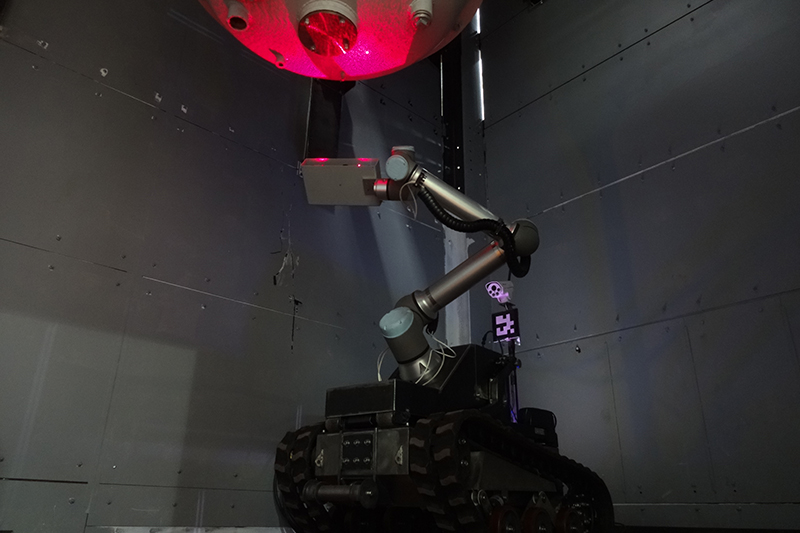
Why did Jacobs use the STEM Returners programme?
Jacobs embraced the opportunity to work with STEM Returners as part of a drive towards diversity and inclusion, but also to take a different approach to attracting talent into the organisation.
How long have you used it?
We have completed one programme with STEM Returners, and we hope to run further ones soon.
How many people have you recruited through the programme?
We have recruited eight new employees through the programme.
How has it changed your recruitment process?
The STEM Returners programme has given us a new route to find talent that we might previously not have connected with. That’s why we plan to follow up this successful pilot with more programmes.
Have you noticed that you are recruiting different people or getting a wider range of people at interview?
The pilot helped to open the minds of the hiring managers on taking a different approach to hiring talent.
How has it changed recruiters’ and interviewers’ perspectives of gaps in the CV?
One of our returners included an employee with a 10-year gap, and she has returned straight into a senior role like there had never been a gap within their CV. This case study alone, helps to continue to shift the mindset.
The STEM returners had mixed reasons for returning, however the lens was more about their skills and talent, and the roles that we could offer rather than a focus on why they took time out from their professional career.
Have there been any benefits to the company from recruiting people who are STEM returners?
Those that joined Jacobs through the STEM Returners programme began adding value from the moment they started. Returners were provided a buddy and guided to the wealth of learning courses that Jacobs has online, to help refresh and build on any additional skills to help them grow within their roles.
Environmental consultancy SLR Consulting joined STEM Returners in recent months and are in the process of recruiting their first starter through the programme.
Why did SLR Consulting become involved with STEM Returners?
Inclusive recruitment to promote diversity of applicants has always been a focus for SLR and we work in technical disciplines with opportunities across STEM. By partnering with the STEM Returners Programme, we can support individuals in returning to STEM careers, which not only aids their path back into employment but also benefits our business, from a skills gap perspective and through enhancing the diversity of our people.
Was the need more important or apparent to you as a company after COVID-19?
Not particularly. Diversity, equity, and inclusion has been high on SLR’s agenda since before the pandemic, however, we weren’t aware of the programme until the early part of 2022. Once we explored the format and commitments of joining the programme, we were eager to get involved.
Did you have feedback/stories from your current workforce that drove your enthusiasm?
We recognise that all our people have lives outside of their jobs, and sometimes this can lead to time out of work for various reasons. At SLR we have enhanced family friendly policies to support our existing employees in accommodating any changes, wherever possible, so wanted to offer this to the wider STEM community as well.
How have you found the process so far?
The process has been smooth and really positive. We have advertised roles across five technical disciplines, resulting in interviews for all roles, and we’ve already had one accepted offer, with our new colleague joining us in April. We also have another candidate at the later stages of the process, so are hopeful about filling our second role soon.
Have you had a different influx of candidates than you previously did?
Yes, working with the STEM Returner Programme we’ve found we’ve been able to engage with candidates from varied backgrounds, in some cases at experience levels we usually have less interest from directly, which has been fantastic to see. Having only been partnered for three months, it’s too early to know if the exposure of working with the programme has impacted our direct recruitment volumes, but we’re looking forward to continuing with the Programme.


